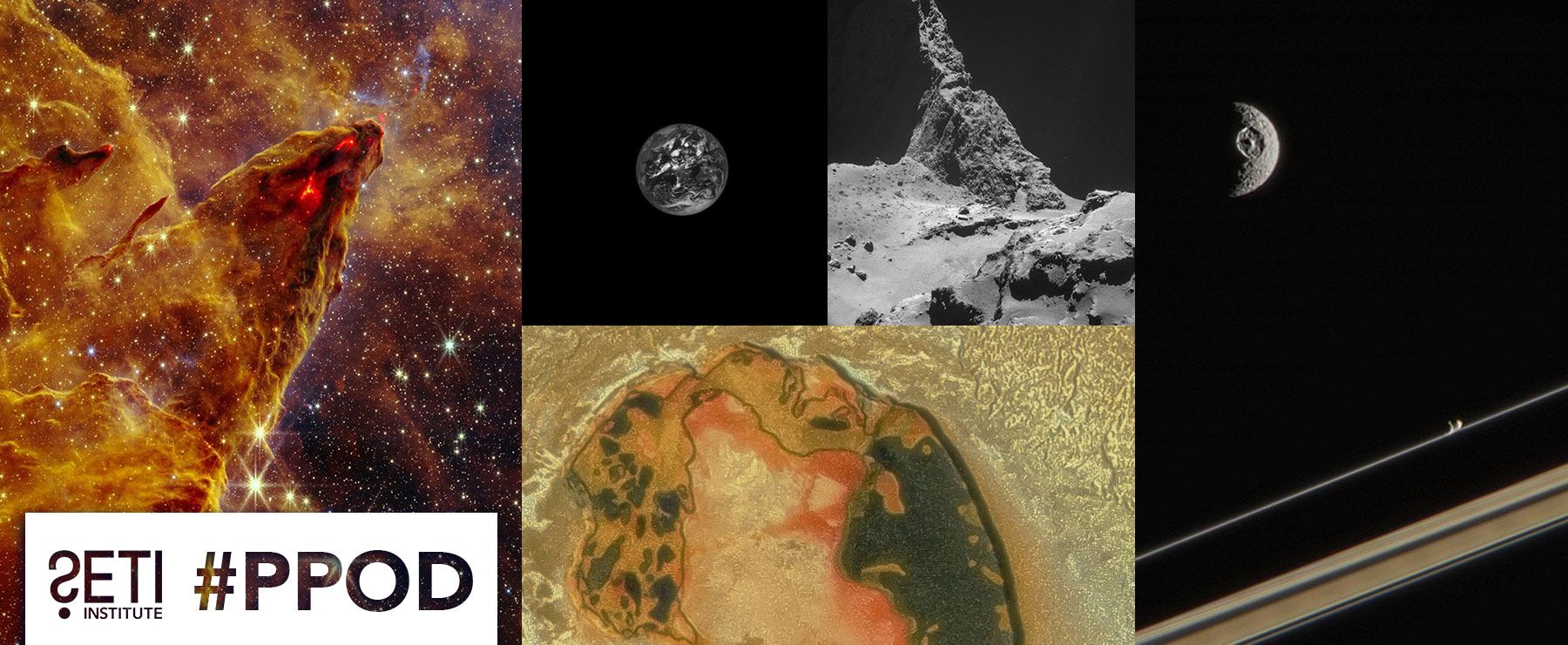
Planetary Picture of the Day
Week of October 24, 2022
From Earth, through our solar system, to deep space – take a moment to enjoy the views!
Monday, October 24, 2022

Credit: NASA/ESA/CSA/STSci
Where Stars are Born
This is just a tiny portion of the new JWST image of the Pillars of Creation. The red regions are where stars are being born.
Tuesday, October 25, 2022

Credit: NASA/JPL-Caltech/SSI/Cassini Imaging Team/J. Major
Saturnian Splendor
A view of Mimas, Prometheus, and Saturn's rings captured by the Cassini Imaging Team on October 13, 2005.
Wednesday, October 26, 2022

Credit: NASA/JPL-Caltech / Galileo mission
Image processing and caption: J. Major
Volcano on Io
Tupan Patera, an 80-km wide volcanic crater on Jupiter's moon Io imaged by NASA's Galileo spacecraft on Oct. 15, 2001. Approximate natural-color view; color variations come from sulfur compounds in Io's lava. The crater's walls drop ~900 meters.
Thursday, October 27, 2022

Credit: ESA/Rosetta/NAVCAM
Cometary Surface
This is an image from the ESA Rosetta spacecraft's navigation camera (NAVCAM) of comet 67P/Churyumov–Gerasimenko, from less than 10 km above the surface. The image has been processed to bring out subtly illuminated features on the otherwise very dark surface.
Friday, October 28, 2022

Credits: NASA/Goddard/SwRI
Earth from Lucy
NASA’s Lucy spacecraft captured this image (which has been cropped) of the Earth on Oct 15, 2022, as a part of an instrument calibration sequence at a distance of 620,000 km. The upper left of the image includes a view of Hadar, Ethiopia, home to the 3.2 million-year-old human ancestor fossil for which the spacecraft was named.
Lucy is the first mission to explore the Jupiter Trojan asteroids, an ancient population of asteroid “fossils” that orbit around the Sun at the same distance as Jupiter. To reach these distant asteroids, the Lucy spacecraft’s trajectory includes three Earth gravity assists to boost it on its journey to these enigmatic asteroids.





